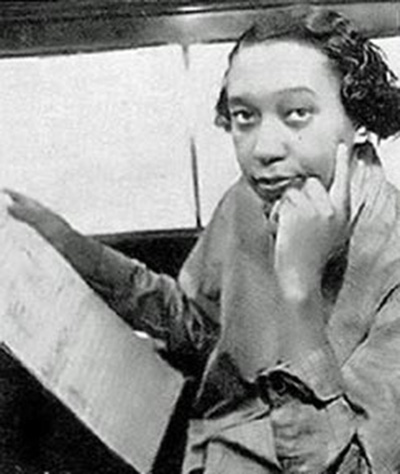Julia Perry

Born: March 25, 1924, Lexington, Kentucky
Died: April 24, 1979, Akron, Ohio
A Short Piece for Orchestra
- Composed: 1952
- Premiere: 1952 in Turin, Italy, Dean Dixon conducting the Turin Symphony
- CSO Notable Performances: These are the CSO’s first performances of this work.
- Instrumentation: 2 flutes (incl. piccolo), 2 oboes, 2 clarinets, 2 bassoons, 2 horns, 2 trumpets, 2 trombones, timpani, bass drum, crash cymbals, snare drum, suspended cymbals, xylophone, harp, piano, celeste, strings
- Duration: approx. 8 minutes
As a child born during the height of the Harlem Renaissance, Julia Perry traversed a world that held significant potentiality and possibility. Perry was only nine years old when Florence Price’s Symphony No. 1 in E Minor was debuted by the Chicago Symphony Orchestra. The cultural space that Price and the generation of Black women musicians and composers created during the intra-war years provided the springboard for Perry’s ascendance to international acclaim during the decade that followed World War II.
Julia Amanda Perry was born in Lexington, KY in 1924, but spent her formative years in Akron, Ohio. The city nurtured the talents and creative energy of Perry and her siblings. She studied piano, voice and violin in high school and, upon graduation, enrolled at the Westminster Choir College, where she earned a bachelor’s degree in 1947 and a master’s degree a year later. It was during her years at Westminster that Perry first acknowledged her interest in composition and conducting. Her desire to continue to develop her skills in both led her in 1948 to move to New York, where she met conductor Piero Bellugi. Impressed by the sketches of her Stabat Mater, Bellugi introduced Perry to his mentor, the serialist composer Luigi Dallapiccola.
In the summer of 1951, Perry began studying composition with Dallapiccola at the Berkshire Music Center at Tanglewood. She completed and premiered her Stabat Mater, which would become one of her most performed works, during this period.
Dallapiccola convinced Perry to move to Florence, Italy to continue her studies. During her first year in Europe, Perry began work on A Short Piece for Orchestra, which was premiered in 1952 by the Turin Symphony. The composition exemplified how Perry helped advance the Black postwar concert aesthetic with her employment of serial techniques, complex contrapuntal phrases and unique instrumental settings.
A Short Piece for Orchestra begins with a vivid, fanfare-like motive that segues into motivic interplay between various instruments. This rhythmic and motivic drive underscores the section but then suddenly gives way to a more subtle, lyrical motive introduced by the flute. Other instruments soon enter with their own lyrical responses. Perry disrupts the serenity of the moment with a return to the opening motive. The remainder of the piece encompasses a similar sequence of sections whose identity is marked by contrasting moods and tempos that alternate with the variations of the opening motive.
In the years that followed its premiere Perry revised the work. Originally written for chamber orchestra, Perry expanded the instrumentation to full orchestra in 1955. That same year, the work was premiered in the U.S. by the Little Society Orchestra. A decade later, the New York Philharmonic debuted and recorded A Short Piece for Orchestra. The performance signified Perry as the first Black woman composer to have a work performed by that orchestra.
Throughout the 1950s, Perry continued to travel back and forth between the U.S. and Europe. In addition to conducting various orchestras, she also lectured as part of the U.S. Information Agency’s cultural program. It was also during this period that Perry first developed health challenges that would plaque her for the remainder of her life. Despite her compromised health, Perry continued to compose and teach. She died in 1979.
—Dr. Tammy L. Kernodle